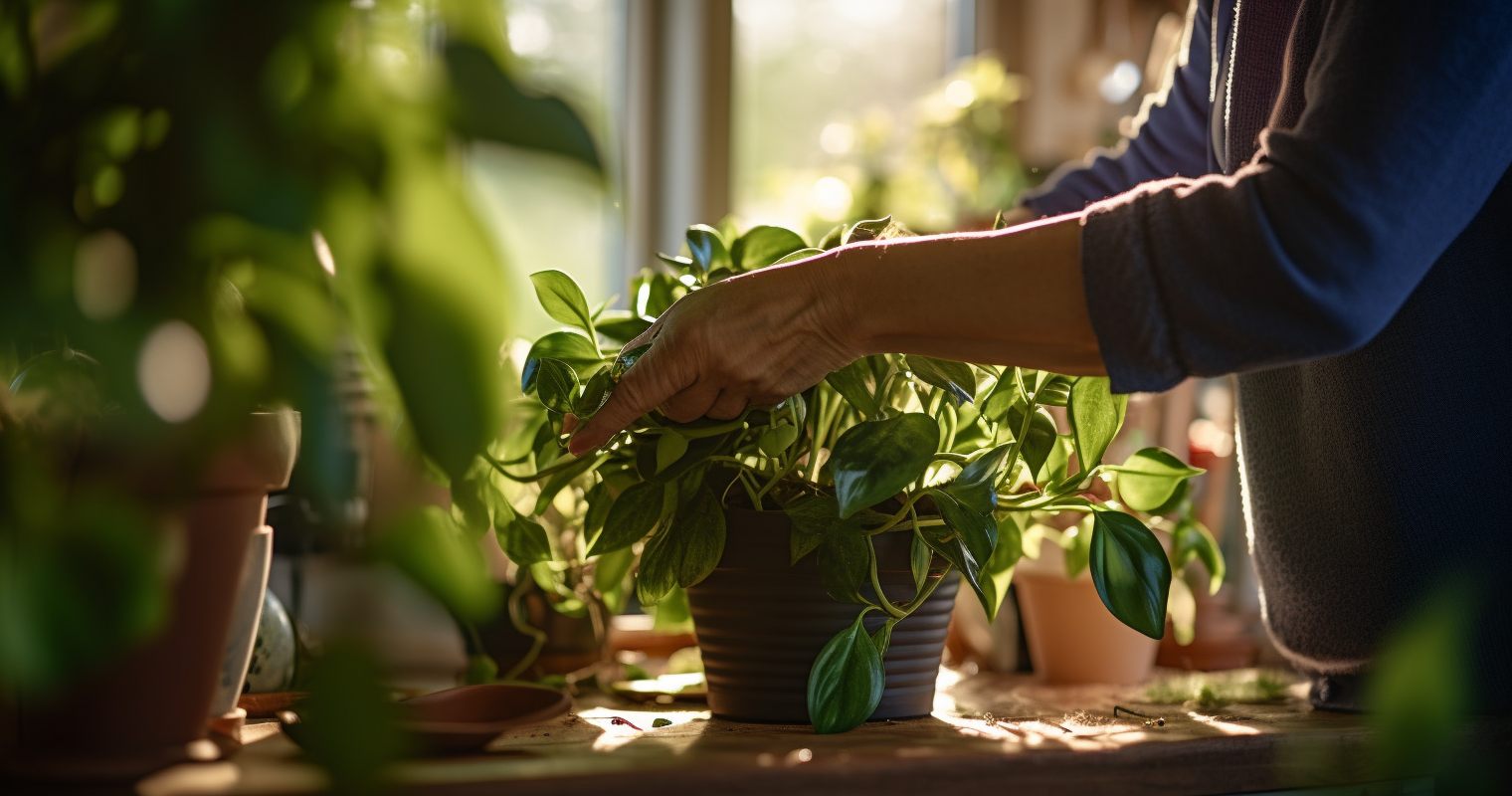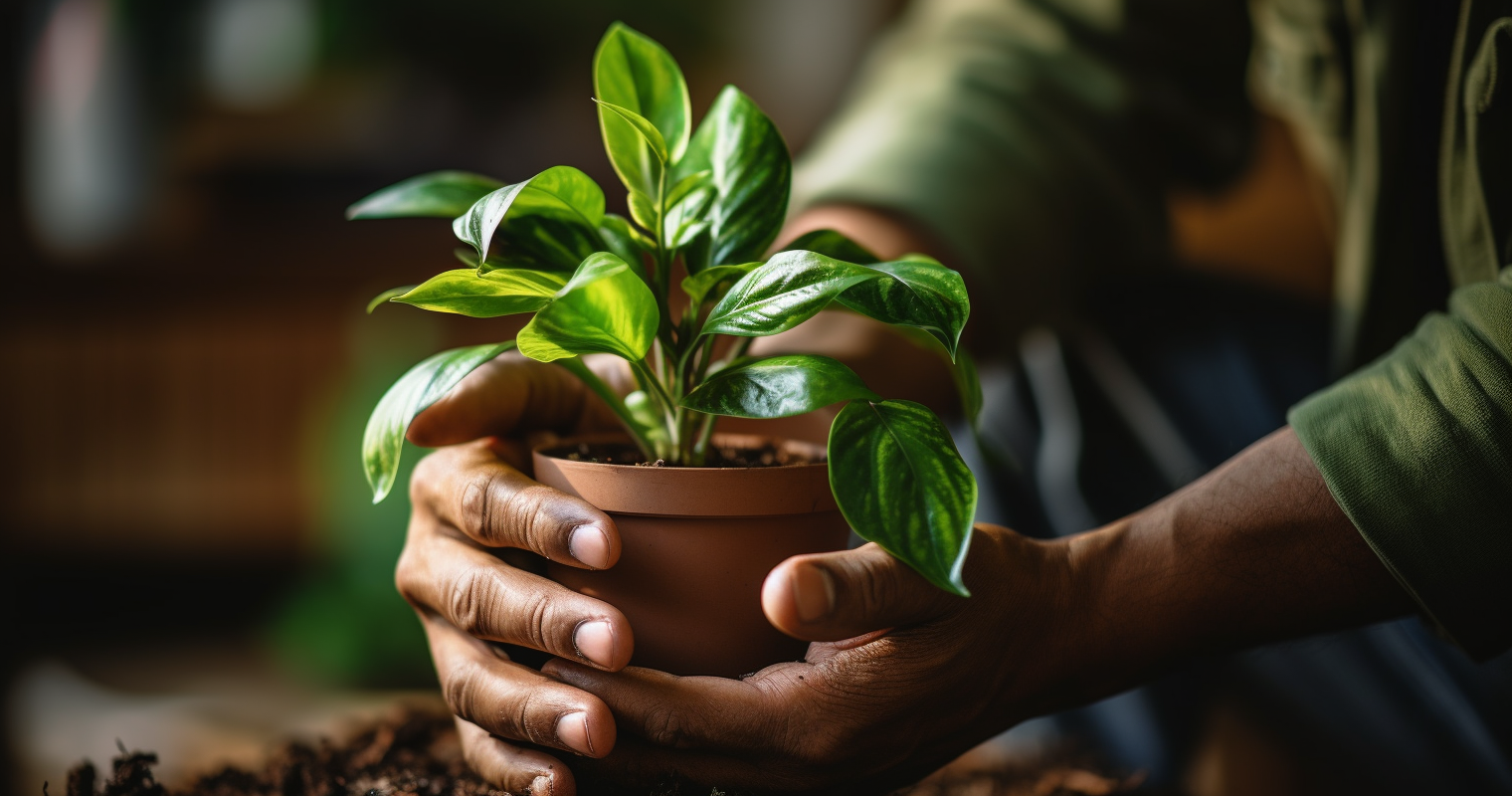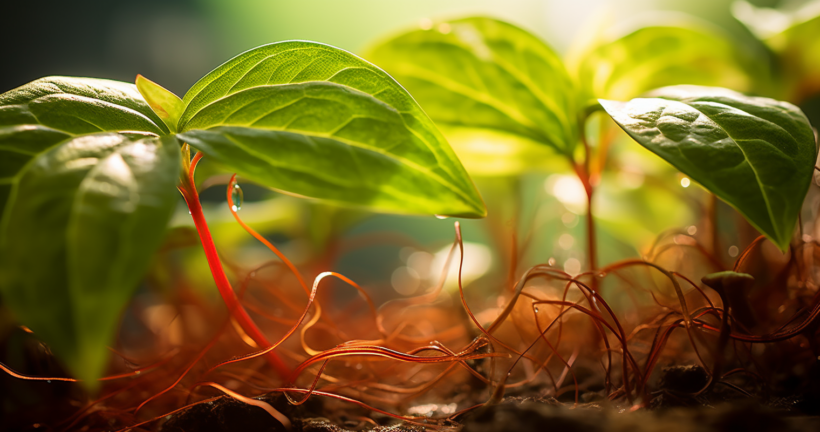Did you know that 65% of plant enthusiasts have tried their hand at propagation? How To Grow Houseplants From Cuttings is a popular method that allows plant lovers to expand their green family without spending a dime. This comprehensive guide is designed to help you master the art of growing houseplants from cuttings, ensuring your indoor garden thrives. Whether you’re a seasoned gardener or a newbie, this guide has something for everyone. Dive in and discover the secrets to lush, vibrant houseplants.
Ready to embark on a green journey? Let’s get started!
Understanding Plant Propagation
Ever wondered how your neighbor’s house is always brimming with lush, green plants without them buying a new one every week? The secret lies in the art of plant propagation. Plant propagation is the process of creating new plants from a variety of sources: seeds, cuttings, bulbs, and other plant parts. It’s like giving birth to a plant without the plant dating scene!
Now, why propagate houseplants from cuttings? For starters, it’s economical. Why buy a new plant when you can produce a clone of your favorite one? Plus, it’s a sustainable way to expand your indoor garden. According to a study by the National Gardening Association, 50% of houseplant enthusiasts prefer propagation from cuttings due to its higher success rate.
Diving deeper, the science behind plant growth from cuttings is fascinating. When you take a cutting, you’re essentially wounding the plant. But plants are resilient! They produce cells at the wound site that can differentiate into various parts, leading to new roots and shoots. It’s nature’s way of ensuring survival.
Types of Cuttings for Propagation
There are several ways to get a piece of the plant-propagation pie:
| Cutting Type | Description | Suitable Plants |
|---|---|---|
| Stem Cuttings | Young shoot cut from parent plant and planted in a growth medium. | Pothos, Philodendron, Spider Plant |
| Leaf Cuttings | Growth from just a leaf or a piece of it. | Begonia, African Violet |
| Root Cuttings | Cuttings taken from the root of the plant. | Blackberry Lily, Horseradish |
- The most common method. It involves taking a young shoot and planting it in a growth medium. Perfect for plants like pothos and philodendrons.
- Some plants can grow from just a leaf or a piece of it. Begonias are a classic example. Talk about getting more bang for your buck!
- As the name suggests, these are cuttings taken from the root of the plant. It’s a bit advanced but works wonders for plants like the Blackberry lily.
For more insights on gardening tools that can aid in these processes, check out our guide on essential gardening tools.
Tools and Materials Needed
Before you start snipping away, ensure you have the right tools:
| Tool/Material | Description |
|---|---|
| Clean scissors or pruning shears | Used to make clean cuts on plant stems. |
| Rooting hormone | Boosts root development in cuttings. |
| Sterile potting mix | Provides a clean environment for cuttings to grow. |
| Containers or pots with drainage holes | Holds the cuttings during propagation. |
- Dirty tools can introduce diseases. And trust me, plants gossip; you don’t want yours talking about your unhygienic habits.
- Think of it as a plant energy drink. It boosts the growth of roots from the cuttings.
- Provides a clean environment for the cuttings to grow. Remember, cleanliness is next to plant-liness.
- Your cuttings need a home. Any container with drainage holes will do.
For a more detailed guide on the tools and their usage, this how-to guide on propagating house plants is a treasure trove of information.
Preparing Your Cuttings
Starting your journey on How To Grow Houseplants From Cuttings begins with preparation. It’s like prepping for a marathon, but instead of running shoes, you’re lacing up… well, gardening gloves.

- Choosing the right plant: Not all plants are created equal. Some are divas, demanding specific conditions, while others are more laid-back. Opt for robust, disease-free plants. Remember, a healthy parent equals a healthy baby plant.
- When to take cuttings: Timing is everything. The best time is during the plant’s active growth phase, typically spring or early summer. It’s like catching them in their prime time.
- How to make a clean cut: Use sharp, sterilized scissors or shears. Aim for a 4-6 inch cutting just below a leaf node. Think of it as giving your plant a stylish haircut.
For a visual guide on the cutting process, this tutorial is a gardener’s dream.
How To Grow Houseplants From Cuttings
Now that you’ve got your cuttings, it’s time to make some plant magic.

- Treating the cuttings with rooting hormone: This step is like giving your cuttings a growth superpower. Dip the cut end into the hormone, ensuring it’s well-coated. It boosts root development and gets them off to a flying start.
- Planting the cuttings: Insert the treated end into a pot filled with a sterile potting mix. Ensure it’s deep enough to stand upright but not buried too deep.
- Providing the right environment: Cuttings love humidity. Place them in a warm spot with indirect light. Think of it as a plant spa day, every day.
For more in-depth insights, Gardeners’ World offers a treasure trove of information.
Monitoring and Care
Like any newborn, your cuttings need some TLC.
- Watering regimen for cuttings: Keep the soil consistently moist but not waterlogged. It’s a delicate balance, like making the perfect cup of tea.
- When to transplant cuttings: Once you see new growth and feel resistance when tugging gently, it’s time to move them to their forever home.
- Common issues and how to address them: Yellowing leaves? Might be overwatering. No roots after weeks? Could be a lack of humidity. Always monitor and adjust as needed.
For more tips on maintaining a healthy garden environment, our guide on water features for your garden landscape is a must-read.
Advanced Propagation Techniques
So, you’ve mastered the basics of How To Grow Houseplants From Cuttings and are ready to level up? Let’s dive into some advanced techniques that’ll make your green thumb even greener.
- Layering: This method involves inducing roots to form on a plant stem while it’s still attached to the parent plant. There are two popular types:
- Air layering: Ideal for plants with thick stems. A section of the stem is stripped of its bark, wrapped in moist moss, and then covered in plastic. Over time, roots form at the cut site.
- Soil layering: The stem is bent to the ground, covered with soil, and roots form at the bend. Strawberries love this method!
- Division method for mature plants: Some plants, like ferns and hostas, grow in clumps. These can be divided into smaller clumps and replanted. It’s like moving your kids to their own rooms.
- Using grow lights for faster growth: Some plants are sun junkies. Grow lights can provide them with the extra light they crave, especially during winter months. Think of it as a plant tanning bed, minus the SPF.
For more on these techniques, the Washington Post’s guide is a goldmine.
Troubleshooting Common Issues
Every gardener faces challenges. But with a bit of knowledge, you can tackle them head-on.
- Why cuttings rot and how to prevent it: Overwatering is the usual suspect. Ensure your soil is moist but not soggy. And remember, cuttings are like teenagers; they need space. So, avoid overcrowding.
- Dealing with pests on new cuttings: Pests love fresh growth. Regularly inspect your cuttings and use organic insecticides if needed. Prevention is better than cure.
- Why cuttings aren’t rooting and solutions: Factors like temperature, light, and humidity play a role. Ensure your cuttings have the right environment. If all fails, try singing to them; plants have feelings too!
For a deeper dive into these challenges, Better Homes & Gardens has got your back.
Celebrating Growth: From Cutting to Mature Plant
The journey from a cutting to a mature plant is like watching your child graduate. It’s emotional, rewarding, and a testament to your care.

- Recognizing the signs of a successfully rooted cutting: New growth is the most obvious sign. But a gentle tug resistance means the roots have taken hold.
- Transitioning to regular care routines: Once rooted, your plant is ready for the big world. Gradually introduce it to its new environment, be it more light, less humidity, or a bigger pot.
- Celebrating the joy of propagation success: Take a moment to pat yourself on the back.
Frequently Asked Questions
How do I start with growing houseplants from cuttings?
Starting with How To Grow Houseplants From Cuttings is simple. Begin by selecting a healthy mother plant, then cut a 4-6 inch stem below a node. Place it in water or soil, and watch it grow!
What types of plants are best for this method?
Many houseplants are suitable for this method, including pothos, philodendron, and spider plants. Research your specific plant to ensure success.
How long does it take for cuttings to root?
Typically, cuttings take 2-6 weeks to root, but this can vary based on the plant type and conditions.
Do I need special tools or equipment?
Basic tools like sharp scissors or pruners, a glass of water or pot with soil, and optionally, rooting hormone, are all you need.
Can I grow any houseplant from a cutting?
While many houseplants can be grown from cuttings, some might require other propagation methods like division or air layering.
How often should I water the cuttings?
Watering frequency depends on whether you’re rooting in soil or water. For soil, keep it consistently moist but not soggy. If in water, change the water every few days.
What should I do if my cuttings don’t root?
If your cuttings don’t root, it might be due to factors like poor cutting quality, wrong conditions, or disease. It’s best to start fresh with a new cutting.
Conclusion
Embarking on the journey of How To Grow Houseplants From Cuttings is both rewarding and sustainable. By mastering this skill, you not only save money but also contribute to a greener environment. Remember, patience is key, and with the right knowledge, your indoor garden will flourish.
Inspired to grow more? Share this guide with fellow plant lovers and spread the green love!
Thank you for reading!
